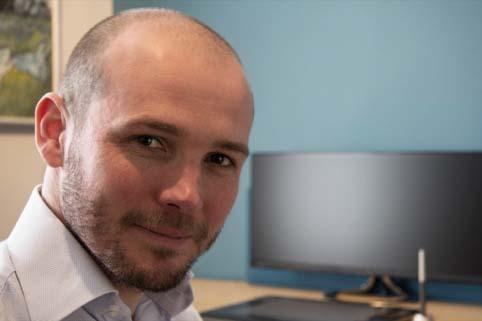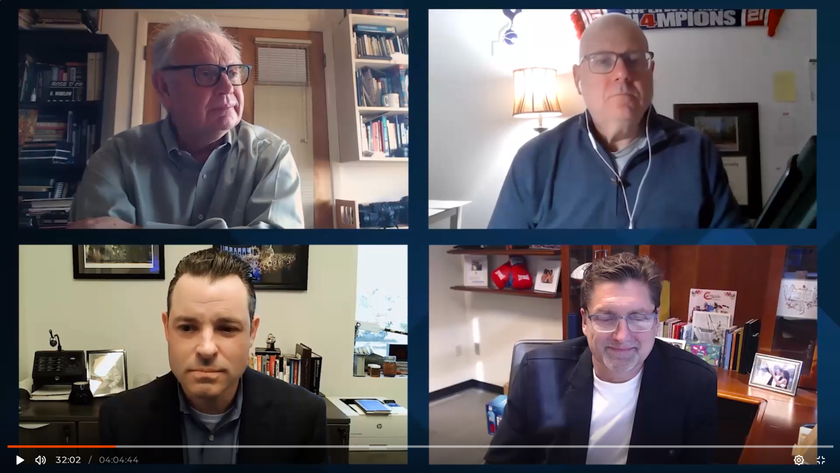FCC’s Lake: 2014 Auctions ‘Aggressive But Doable’

Federal Communications Commission Media Bureau Chief William Lake
WASHINGTON—William Lake, chief of the FCC’s Media Bureau, told broadcasters last week that although he is encouraged with progress on creating new broadcast standards, the FCC is moving forward regardless with its planned spectrum auctions in 2014.
“We’ve set a goal of adopting rules this year in holding the auctions in 2014 in order to meet a shortage [of] spectrum for wireless broadband that may appear as early as 2015,” Lake said. “We’re in full swing on that project and we think that those target dates are aggressive but doable.”
Lake made his comments at the annual meeting of the Advanced Television Systems Committee in Washington D.C., where some of television’s best and brightest engineering minds assembled to discuss the next frontiers in U.S. broadcast television. While mobile DTV and delivery of video to the “second screen,” were on the agenda, the lion’s share of attention centered on the proposed ATSC 3.0 television system, which is targeted at increasing transmission flexibility and efficiency, and integrating with other video delivery technologies. ATSC 3.0 topic surfaced early in the daylong meeting as part of Lake’s keynote address.
“ATSC, since its founding, has been a mechanism of innovation in the broadcast industry and it’s gratifying to see how much it has done in recent years,” Lake said. “In particular, I’m excited to see ATSC’s activity looking toward development of a new technical standard, ATSC 3.0.
“To compete effectively in offering mobility and interactivity it seems likely that broadcasters will need a new technical standard. The added capabilities of ATSC 2.0 are a down payment, but the potential benefits of an ATSC 3.0 promise to be far greater. And as for 4k displays…like the one shown here, broadcasters will want to be in the game with a way to deliver 4k video over the air.
“[The FCC’s] formal role will be to consider a rulemaking to bless any new standards that may be brought to us as we did with the original ATSC standard, but in the meantime, please think about what we might do to facilitate interactivity in this area.”
ROLLOUT AND REPACK AREN’T GOING TO WAIT
Lake, however, dashed hopes that rollout of the ATSC 3.0 standard might coincide with the Congressionally mandated TV spectrum auction and repacking of channels.
“We’ve also heard it said that it would be ideal if the repacking that follows the auction could be done at the same time the industry implements a new technical standard,” Lake said. “I can see why synchronizing those two activities would have some appeal, but it’s important to recognize that it almost certainly won’t happen. By contrast, developing and implementing a new technical standard for broadcasting may be a multi-year affair, even with ‘the pedal to the metal.’
“There are good reasons why the industry should not want to dawdle in considering and developing a new standard, but it would be a mistake to think the process could be collapsed to coincide with the auction and replacing process under the Spectrum Act,” Lake said. “The move to coordinate with activities in other parts of the world through the Future of Broadcast Television organization, while commendable, may be another reason why implementation of a new standard, even if done as quickly as possible, will march to a different drummer than the incentive auction.”
During a Q&A session following Lake’s remarks, he was reminded that Congress had established a 10-year period for the next TV broadcasting “transition,” and was asked if wouldn’t make sense to expand the auction timeline to allow alignment with the ATSC 3.0 deployment.
“I think all of the current commissioners…are committed to doing the auction as quickly as possible…for two reasons,” Lake said. “One is that we do perceive a coming crunch for wireless broadband that’s projected to start as early as 2015. The other is that we do think that continued uncertainty in the broadcasting industry about the auction and the repacking is harmful. That said, I do urge ATSC and the industry to work as fast as you can and want to on ATSC 3.0; it’s just that I think it’s unrealistic to expect that the incentive auction will slow down to wait.”
ATSC 3.0 WORKING GROUP UPDATE
ATSC 3.0 came to the forefront later in the day, with Jim Kutzner, chair of the ATSC TG3 group tasked with developing the new standard, providing some background and comments.
“We have said from the beginning that [ATSC 3.0] really must provide improvement and additional functionality that is really sufficient to launch a non-backward compatible system,” Kutzner said. “It really needs to be worth the effort and cost we’re going to undertake.”
He added: “We do need an increased flexibility and efficiency, and we’re going to do that by reconsideration of the physical layer. We’re recognizing that there are new usage models with the viewers…the new TVs are connectible to the Internet. Viewer personalization is going to be desired and will increase targeting of those viewers, and will certainly add value for both the viewers and broadcasters. [As] the video codecs and new content sources come along, they are going to further enhance the viewer experience and we need a system that’s really going to meet those demands.”
ATSC 3.0 WISHES, EXPECTATIONS AND PROPOSALS
Immediately following Kutzner’s remarks, a five-member panel was convened by moderator Myra More, president of Digital Tech Consulting, to explore considerations in moving from one digital television platform to another, Participants included Bret Jenkins of Lin Media; Mark Aitken of Sinclair Broadcasting Group; Jim Goodman of Capitol Broadcasting; John McCoskey of PBS; and Erik Moreno of Fox Television. Each expressed their views on the proposed new ATSC 3.0 delivery system.
Jenkins felt that to succeed any new television system had to be user-friendly.
“Make the system really, really easy to use…and make the system more accessible in a lot more places other than with a 30-foot high antenna on your roof,” Jenkins said. “ I’m a believer in live television; I don’t think it’s going away.” Aitken agreed with Jenkin’s desire for operational simplicity, and with it, flexibility for the broadcaster. “[It should feature] ease of reception, with an ability to control the quality of service that we offer our viewers,” Aitken said. “Not every broadcaster has the same idea and the same model in mind as to who their audience is, so the ability to dial into that audience is exceptionally important.”
Goodman focused on the need for a unified means for reaching all viewing devices. “I’m tired of the consumer electronics guys and the FCC telling us what a television is and what a television is not,” Goodman said. “Anything that can display video is a television and therefore I should be able to get to that device. The success and failure [of broadcast television], in my opinion, is what we’re talking about. This is all about us becoming more consumer-centric. That means that our technology—no matter what it ends up being—needs [to be able] to evolve and be flexible. A single-chip standard [is needed] so that over time we can evolve, implement new technologies, new codecs, all sorts of new things without having to go back to transitions and to get FCC approval.”
PBS’s McCoskey felt that ATSC 3.0 would enable new services through enhanced efficiencies, but that any transition would have a price tag attached.
“Transitions are painful,” McCoskey said. “The repack is going to be a transition and it’s going to be a painful transition. They cost money, even if you’re reimbursed. And they cause confusion and there’s a cost to viewers as well. We don’t get a chance to do this very often. The concept of dropping backward compatibility is incredibly important to the transition. Ignore backward compatibility, but really focus on forward compatibility…. It also has to be about cost efficiency and operational efficiency.”
Moreno noted that there was more than technology associated with the proposed standard, and called enhanced capacity to provide distribution for content above and beyond mainstream broadcasters’ programs.
“ATSC 3.0 is not about technology, but is about a business vision which is fundamentally lacking. The only thing that stops us is ourselves. We’re fragmented by design and by history; however, we are competing against very organized innovators. The consumers continue to demand new, cool, products and new, cool applications. I would have a broadcast network optimized for delivery of video one-to-many sitting and integrated with the IT-based networks. Imagine …broadcasters wholesaling bits and making a brand new revenue stream that wasn’t there before. We stand at the threshold of being the largest carrier in the United States, wholesaling more bits more efficiently than anyone else.”
Get the TV Tech Newsletter
The professional video industry's #1 source for news, trends and product and tech information. Sign up below.
James E. O’Neal has more than 50 years of experience in the broadcast arena, serving for nearly 37 years as a television broadcast engineer and, following his retirement from that field in 2005, moving into journalism as technology editor for TV Technology for almost the next decade. He continues to provide content for this publication, as well as sister publication Radio World, and others. He authored the chapter on HF shortwave radio for the 11th Edition of the NAB Engineering Handbook, and serves as editor-in-chief of the IEEE’s Broadcast Technology publication, and as associate editor of the SMPTE Motion Imaging Journal. He is a SMPTE Life Fellow, and a Life Member of the IEEE and the SBE.













